| By Rebekka Väisänen, Gale Ambassador at the University of Helsinki |
All media outlets are now brimming with news about the newest addition to the British Royal Family, HRH Prince Harry and Meghan’s baby boy. In light of this, I decided to search Gale Primary Sources to see how royal births have been documented and celebrated throughout the ages. Below I explore the media hype around five royal ancestors, ranging from poetry to the decoding of names.
Charlotte, Princess Royal, 29th September 1766
One of the oldest results from my search was “An Ode” dedicated to “Her Royal Highness, Charlotte, Augusta, Matilda, Princess Royal of England.” This ten-page poem was distributed for one shilling a copy on the streets of London, in honour of the princess’ 12th birthday on 29th September 1778. Now, it is accessible in Eighteenth Century Collections Online. Princess Charlotte later became the Queen of Württemberg, through her marriage to Frederick I of Württemberg. She was also godmother to her niece, Princess Victoria.
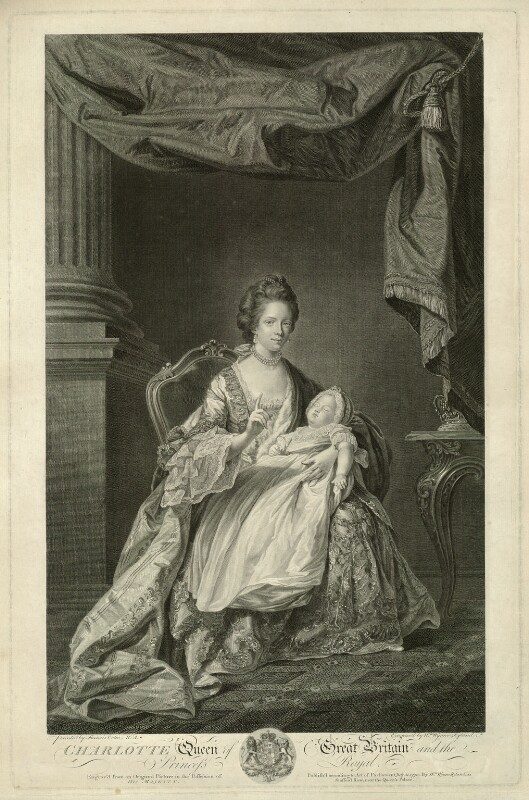
© National Portrait Gallery, London, Creative Commons
Queen Victoria, 24th May 1819
Princess Victoria’s birth was noted in the “Births, Deaths, Marriages and Obituaries” section in the Leeds Intelligencer on 31st May 1819, available through Gale’s British Library Newspapers archive. The statement reads that “The Royal Family of Great Britain has received another addition, by the safe delivery of her royal highness, the Duchess of Kent, of a Daughter. This happy event took place at Kensington Palace, on Monday morning, at a quarter past four o’clock. Her royal highness and the infant, are, both doing well.”
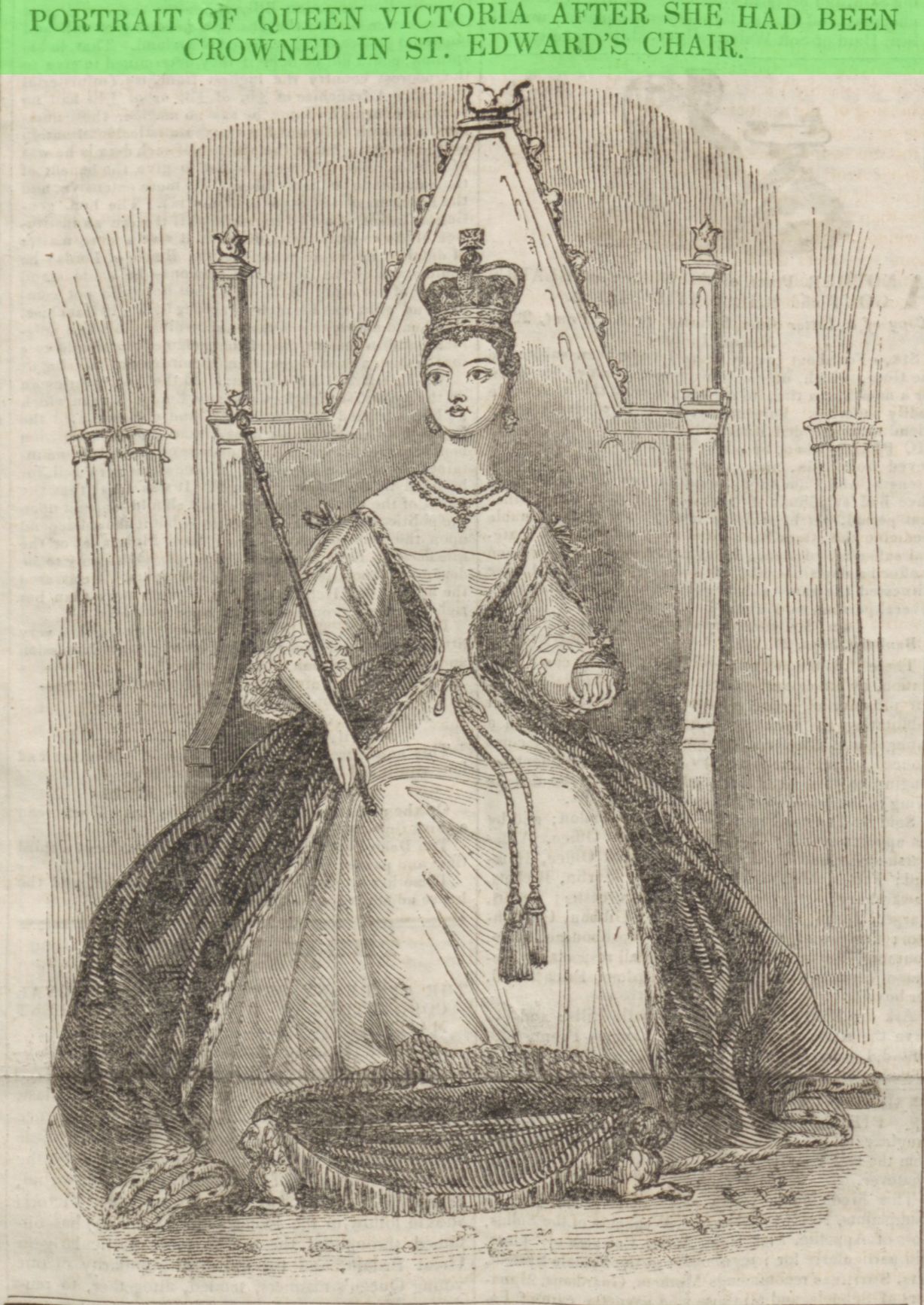
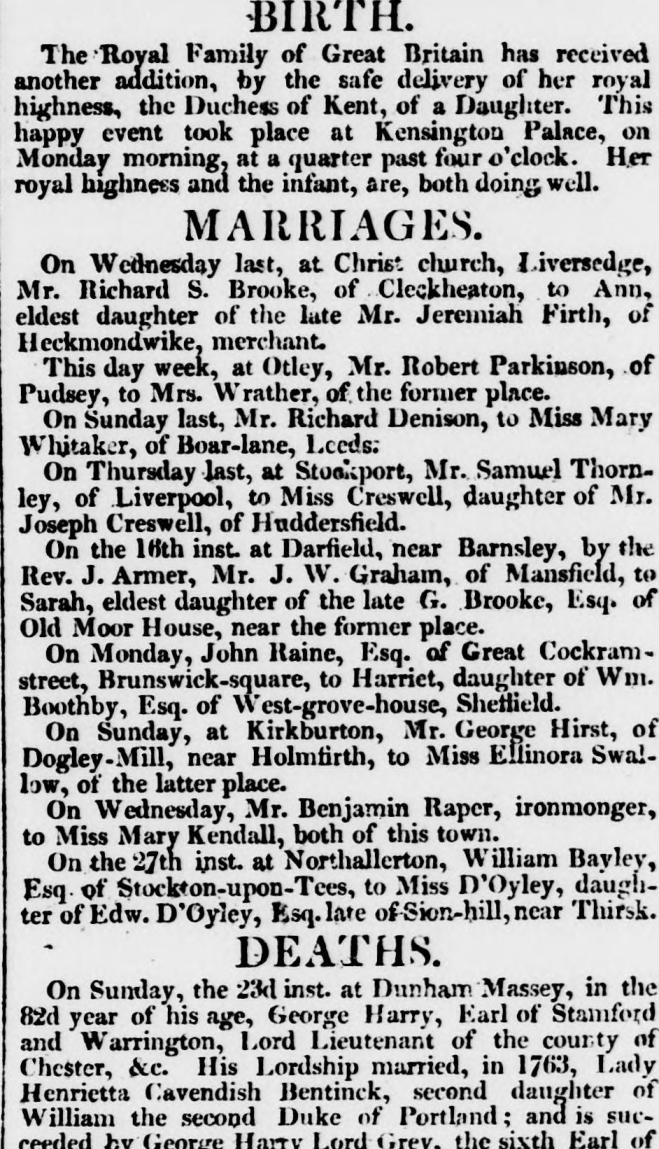
Royal baby Victoria, like her godmother, was also honoured with poetry on her birthday. “To the Infant Princess” was submitted to the Morning Post following news of her birth. This sonnet with a Shakespearean tone connects the joy of the spring season, when all things are coming back to life, with the joy over the new life in the Royal Family.

Right above this sonnet in the paper are two bulletins with updates about the health of her mother, the Duchess of Kent, who had had a “slight attack of fever” the night before, following the delivery. She was reported to be “advancing satisfactorily” in her recovery, while the Royal Infant was stated to be doing well.
George VI, 14th December 1895
Upon the birth of Prince Harry’s great-grandfather George VI, people from all over the kingdom sent congratulations to the Royal Family. The formal congratulatory correspondence between the National Conservative League from Worcester and F. De Winton, (on behalf of the Royal parents, the Duke and Duchess of York) was published in the local newspaper, the Berrows Worcester Journal, on 28th December 1895. Here’s a fun fact for you: George VI was originally named after his great-grandfather Prince Albert, as he was born on the anniversary of his death, (a gesture much appreciated by Queen Victoria). However, when he became king, he took on the regnal name George VI.
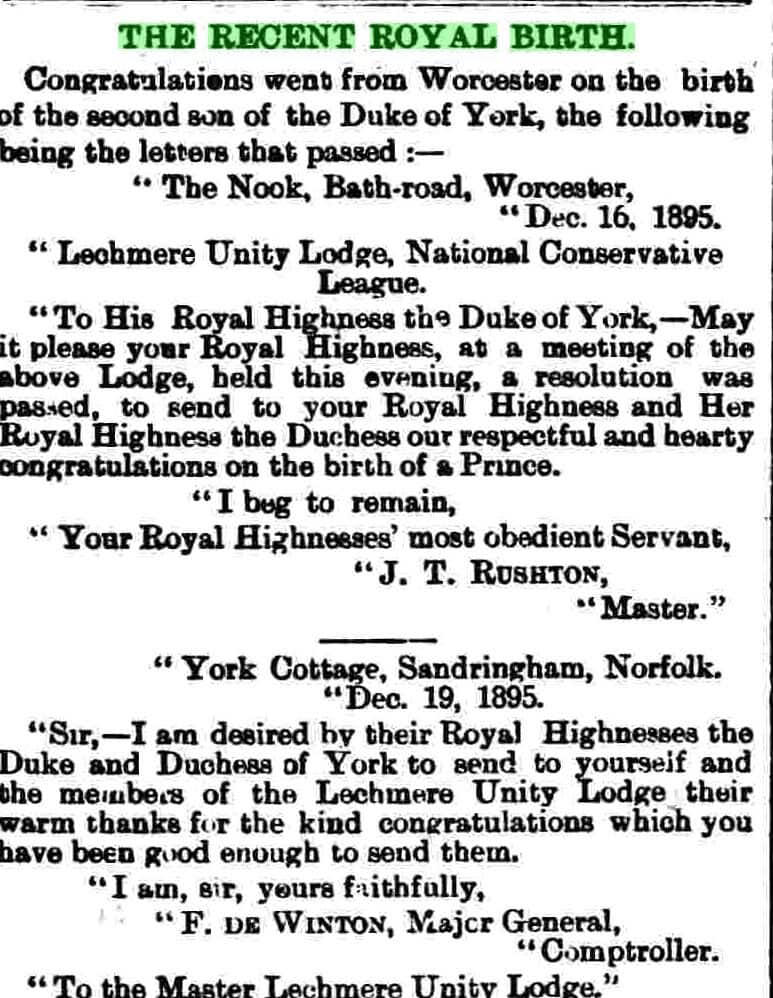
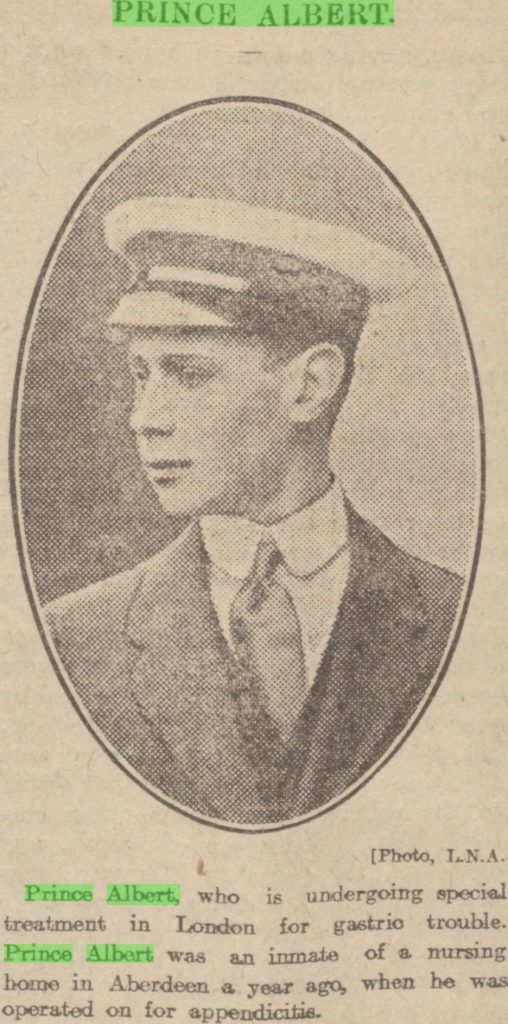
Queen Elizabeth II, 21st April 1926
Queen Elizabeth was born at the home of her paternal grandparents on the 21st of April 1926. Details surrounding the registration of her birth can be found in the Western Daily Press. The article explains the origin of her Christian names: “Elizabeth (after the Duchess), Alexandra (after the great-grandmother) and Mary (after the Queen and Princess Mary) the initials being the same as those of [her mother] ‘E.A.M.’”
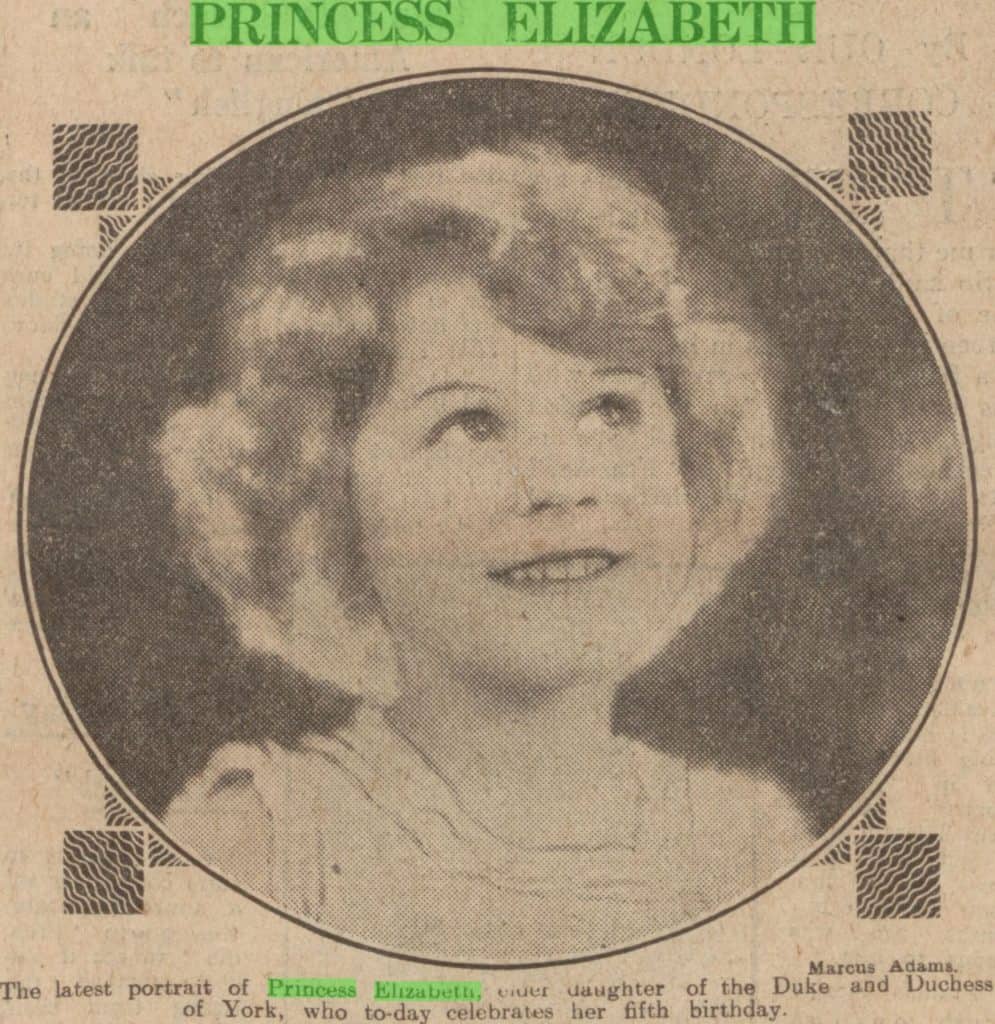
Prince Charles, 14th November 1948
The Evening Telegraph ran a full cover story on the birth of Prince Charles on the 15th of November 1948, the day after his birth, stating that the “Condition of Both [was] Satisfactory”. The reports around Charles’ birth give insight into the celebrations both right outside of the palace (where cheering crowds were asked to let Princess Elizabeth rest), as well as outskirt towns (where bells rang for up to three hours and people out to “wet the baby’s head” had bars running out of beer before midday.) Like his mother, the registration of his birth was noted in the papers.
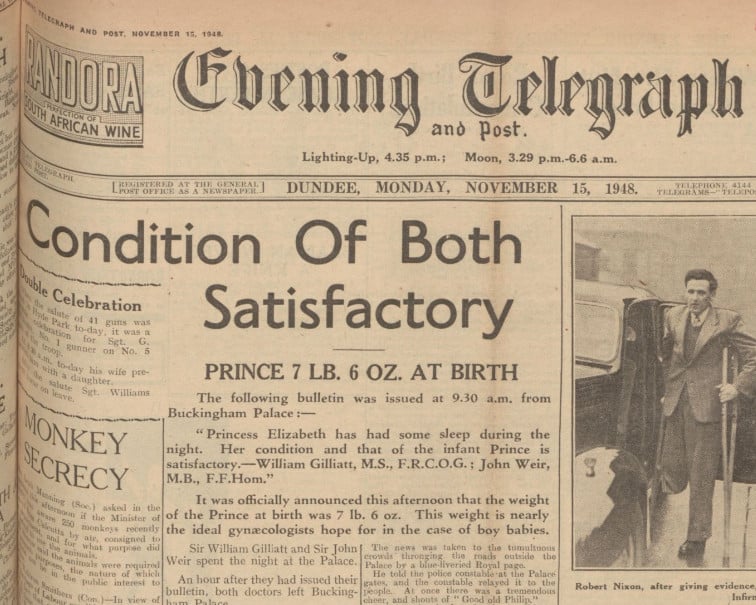
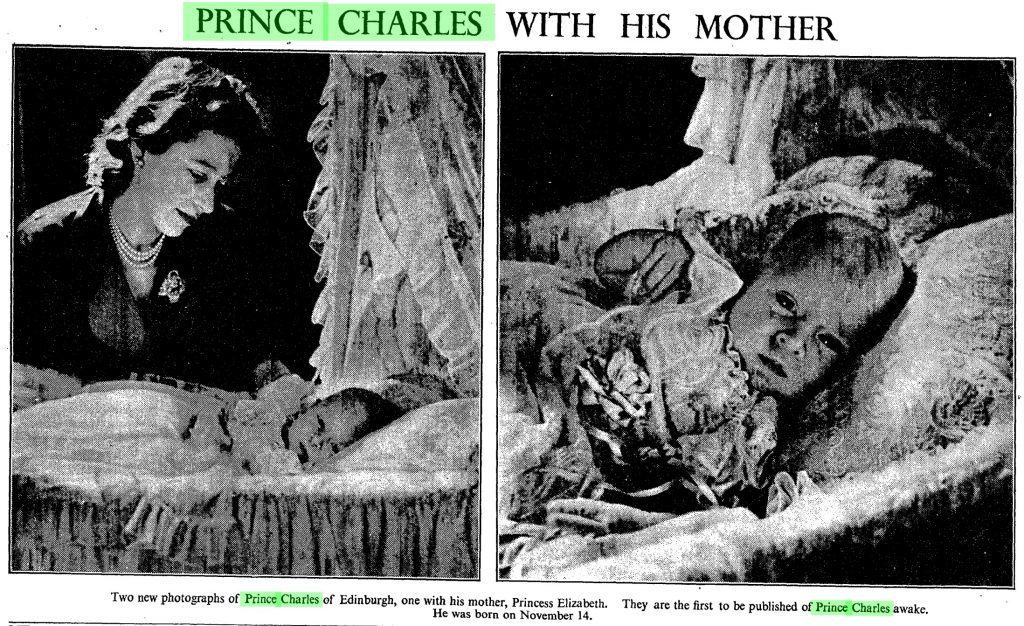
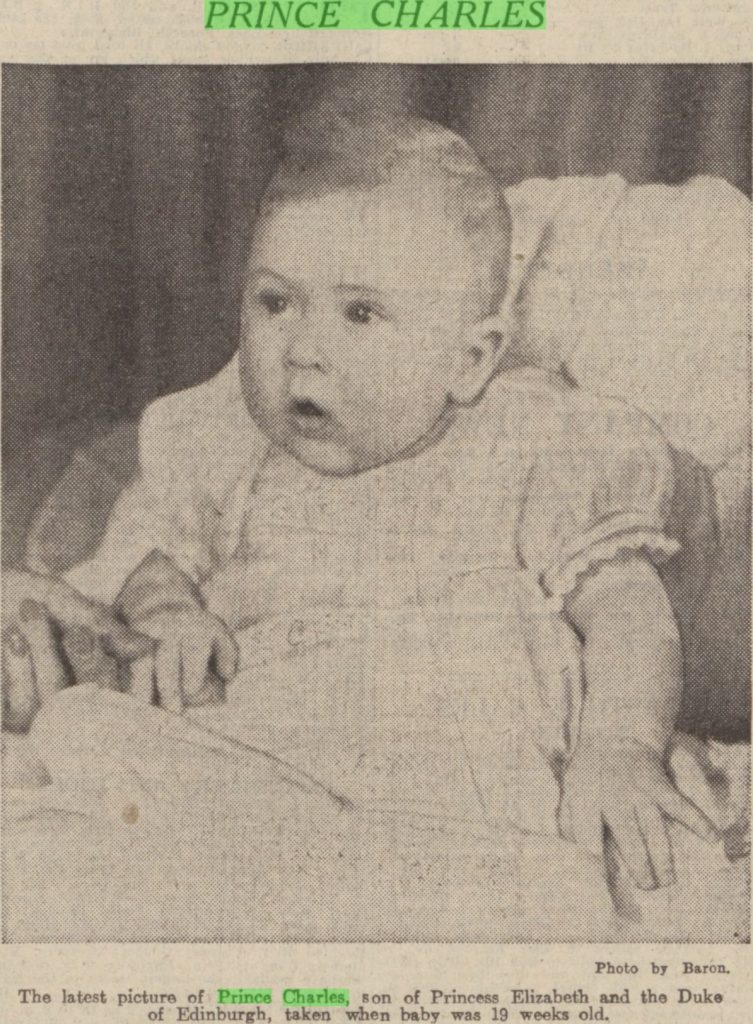
Baby Sussex, 6th May 2019
In today’s social media-saturated age, it seems incredible that we have to wait even a few days to see a picture of the newest royal. Eschewing royal tradition, Harry and Meghan decided to skip the publicity of the royal arrival at the Lindo Wing at St. Mary’s Hospital, giving birth in a private location (later named as London’s Portland Hospital) instead. But before you get too upset about this, just remember that in earlier times the public had to wait for months to see a picture (or painting) of a new-born royal, with the public outside of London often relying on hearsay for years!

